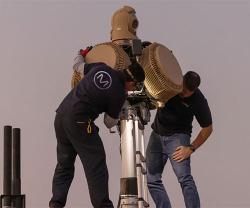Boeing said airlines in the Middle East will continue to defy global trends and are set for a fast-paced growth, expanding their cargo and passenger carrying capacities by investing significantly in 980 twin-aisle airplanes.
In its 'Current Market Outlook' (CMO) which was released in Dubai on Sunday, Boeing projects a market for 980 twin-aisle airplanes like the 787, 777 and 747, roughly 57 percent of the total demand it foresees in the Middle East until 2028.
Its current market outlook also projects demand for 680 single-aisle airplanes, like the Next-Generation 737, which amounts to 40 per cent of the demand for the same period. The remaining three per cent is demand for regional jets with fewer than 90 seats, the outlook said.
"Airlines in the Middle East are well prepared to deal with the rise in demand for air travel with their existing fleet and backlog of orders and we can see that they will continue growing at a tremendous pace," said Randy Tinseth, Vice President of Marketing, Boeing Commercial Airplanes, who presented 'Boeing Current Market Outlook' in Dubai.
"As airlines become increasingly focused on driving operational and cost efficiencies, Boeing is well positioned to help them achieve their objectives by offering efficient airplanes such as the 787 Dreamliner, the 777 and 747-8 that help airlines lower fuel and maintenance costs while offering more nonstop routes," he stated.
According to him, the Middle East air cargo market is currently the fastest growing of all regions and has weathered the downturn with more resilience than others.
Boeing is forecasting about 150 freighters will be delivered to Middle East-domiciled carriers until 2028, mostly medium and large widebodies. Boeing has orders from the region for both the 777 Freighter and the 747-8 Freighter that will help meet the growing demand for large freighters.
Boeing's CMO shows that historically air traffic has continued to grow over the long term despite cyclic economic downturns.
It reflects the reality of today's challenging market environment while retaining a long-term view that portrays how air transport will be transformed over the next 20 years.
The outlook indicates that continued strong fundamentals - including economic growth, world trade, aviation market liberalization and new aircraft capabilities - will drive the need for new airplanes.























